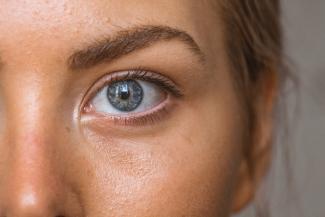
Skin Cancer Awareness Month
With summer right around the corner and May being Skin Cancer Awareness Month, this is the perfect time to review all the ways we can protect ourselves from sun exposure. 20% of Americans will develop skin cancer and the best thing we can do is to spread awareness about prevention and early detection.
What Is Skin Cancer?
According to the Skin Cancer Foundation, “Skin cancer is the out-of-control growth of abnormal cells in the epidermis, the outermost skin layer, caused by unrepaired DNA damage that triggers mutations. These mutations lead the skin cells to multiply rapidly and form malignant tumors. The main types of skin cancer are basal cell carcinoma (BCC), squamous cell carcinoma (SCC), melanoma and Merkel cell carcinoma (MCC).
The two main causes of skin cancer are the sun’s harmful ultraviolet (UV) rays and the use of UV tanning beds. The good news is that if skin cancer is caught early, your dermatologist can treat it with little or no scarring and high odds of eliminating it entirely. Often, the doctor may even detect the growth at a precancerous stage, before it has become a full-blown skin cancer or penetrated below the surface of the skin.”
There are two types of UV rays from the sun that cause skin damage- UVA and UVB. An easy way to understand the two is to think of the “A” in UVA causing premature skin aging, and the “B” in UVB causing burning. We are exposed to UV rays on both sunny and cloudy days alike, making sun protection vitally important year round and something to take seriously. If you still don’t think you need to protect yourself from the sun’s rays, just remember the best case scenario involves premature aging and wrinkles, and the worst case scenario involves skin cancer. Luckily, there are many options for prevention and maintaining skin health and sun protection.
Skin Cancer Foundation Recommendations
- Wear sunscreen - every day! Most people do not wear sunscreen every day, or if they do, are not applying or reapplying enough of it. According to experts, this means a minimum of a broad spectrum (UVA and UVB) sunscreen of SPF 15 or higher. For extended outdoor use, use a sunscreen with a broad spectrum of 30 SPF or higher and waterproof. You must wear sunscreen even while indoors, as UV rays can come in through your windows. The recommended amount is 1 ounce (or 2 TBS) of sunscreen to your entire body at least 30 minutes before sun exposure and reapply every 2 hours or after swimming or excessive sweating.
- Minimize sun exposure. One of the best ways to do this is to seek shade wherever you are. Arrange for shade and umbrellas to be added to outdoor events and wear protective clothing that covers as much exposed skin as possible. It’s also important to wear a broad-brimmed hat and UV-blocking sunglasses to protect the delicate skin on your face and around your eyes. Avoid getting a sun burn at all costs and limit the amount of time as best you can in direct sun exposure.
- Avoid sun bathing and bed tanning to achieve a tan. Luckily, there are so many ways to get a tan that don’t involve damaging your skin. There are many wonderful sunless tanner options available on the market in addition to bronzers and makeup to mimic a tropical golden glow. Bed tanning has been identified as so dangerous for developing skin cancer that it is banned in most states for the use of minors.
- Keep newborns out of the sun and apply sunscreen to children 6 months and older.
- Examine your skin head-to-toe every month and see a dermatologist for a professional skin exam at least once a year.
It’s never too late to start implementing proper sun protection, especially as the weather warms up and we enjoy more time outside. As always, consult with your doctor or dermatologist for personalized skin concerns. For more information and product recommendations, please visit skincancer.org.

